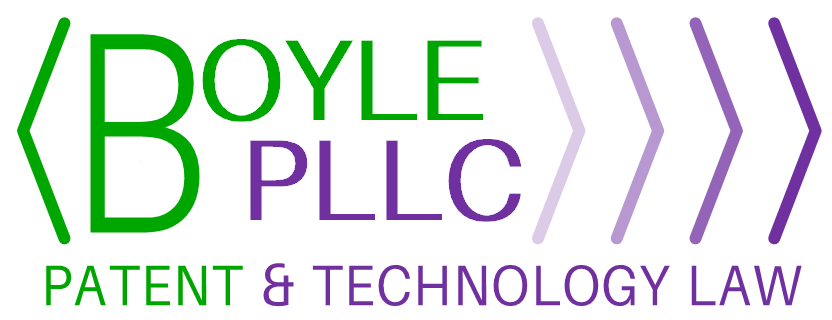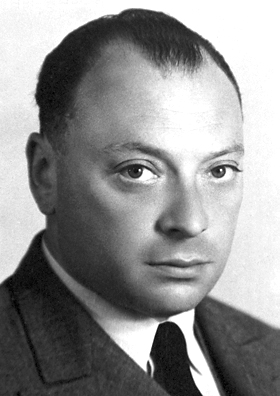To schedule a consult, please click here or call us at (703) 429-1906.

To schedule a consult, please click here or call us at (703) 429-1906.

Starting in August 2020 and continuing through to 2025 (the International year of Quantum Science and Technology), Boyle, PLLC
will feature a scientist or event notable in the history of the
development of quantum mechanics. For the month of October 2020,
Boyle PLLC is pleased to highlight the life of Wolfgang Pauli.
Previous and subsequent features can be found here
.

Wolfgang Pauli in 1945, the year he was awarded the Nobel Prize in Physics for his "decisive contribution through his discovery of a new law of Nature, the exclusion principle or Pauli principle." Photograph: Nobel foundation.
Wolfgang Ernst Pauli was born April 25, 1900 in Vienna, Austria to Wolfgang Joseph and Bertha Camilla (Schütz) Pauli. Wolfgang's mother Bertha (also known as Maria) was a writer and journalist in Vienna, which is where Bertha's father, Friedrich Schütz, got his start as Prague correspondent of the Neue Freie Presse—later becoming its editor. Wolfgang's father, Wolfgang Joseph Pauli, received medical training in Prague, later moving to Vienna. Inspired by his friend and physicist Ernst Mach, Wolfgang's father ultimately gave up his medical practice in Vienna and became a professor of chemistry at the University of Vienna. Indeed, Wolfgang's middle name, Ernst, was given to him by his parents in honor of family friend Ernst Mach—who was also named as Wolfgang’s godfather.
While still in high school, in addition to reading widely in literature and science, Wolfgang was attentive to Einstein's theories of relativity. He enrolled in the University of Munich in 1918, completing a Ph.D. by 1921. Along the way, in response to a request by Arnold Sommerfeld, Pauli completed a 250-page article on Einstein's theories of relativity for a volume of the Mathematical Encyclopedia, edited by Sommerfeld. It is enough to say that Einstein himself had high praise for the treatment of relativity theory in Pauli's 1921 encyclopedia article.
After spending a post-Ph.D. year at the University of Göttingen, Pauli spent a year at Copenhagen working with Niels Bohr—the originator of the quantum theory of the atom. At this time, Pauli proposed a solution to the anomalous doubling of atomic energy states in the presence of a magnetic field. Namely, Pauli proposed that the angular momentum of the electron itself possessed a non-classical two-valuedness. This suggestion not only explained the anomalous Zeeman effect, but accounted for the numerical progression of atomic states in the Periodic Table of Elements. The application of this principle to electronic states ultimately became known as the Pauli Exclusion Principle—and it was for the discovery and application of this principle that Pauli was awarded the Nobel Prize in Physics in 1945.
On August 19, 1940, further developing our understanding of the exclusion principle, Pauli submitted an article to the U.S. Physics Journal The Physical Review, establishing a connection between the intrinsic spin of a particle and the statistics that the particle obeys. It turns out that electrons, as spin one-half particles, obey statistics that lead to the Pauli Exclusion Principle, while photons, as spin one particles, obey statistics that do not lead to the Pauli Exclusion Principle.
On a more humorous note, George Gamow—a colleague of Pauli's—noted an effect he has referred to as the Pauli Effect. According to Gamow, theoretical physicists are incapable of handling experimental equipment; inevitably, experimental equipment will break upon the theorist's touch. Pauli was considered such an exceptional theorist that he did not even have to touch the experimental equipment for it to break: he merely had to cross the threshold of a laboratory for the equipment to fail. In his memoir, Thirty Years that Shook Physics, Gamow wrote of a strange incident that occurred in the Göttingen lab of Nobel Laureate James Franck in which, without any apparent cause, an apparatus for the study of atomic phenomenon suddenly collapsed. Pauli was supposed to be in Zurich at the time of this mishap, and James Franck humorously wrote a note to Pauli about this incident. But Pauli was not in Zurich: he was on his way to visit Bohr in Copenhagen. It was only later, upon the examination of train schedules, that Pauli and Franck realized that Pauli's train to Copenhagen had made a brief stop at Göttingen at the time of the incident!
In 1940, Pauli moved to the United States where he worked at the Institute for Advanced Study in Princeton, New Jersey. After World War II, 1945, Pauli returned to Zurich, where he mostly remained until his death in 1958.
Gamow, G. Thirty Years That Shook Physics: The Story of Quantum Theory (Doubleday & Co., New York, 1966).
Brown, L. M. "Pauli, Wolfgang," MacmIllan Encyclopedia of Physics, Vol. 3 (Macmillan Reference USA, New York, 1996).